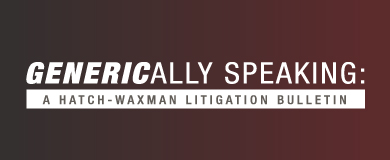- Acumen Powered by Robins Kaplan LLP®
- Affirmative Recovery
- American Indian Law and Policy
- Antitrust and Trade Regulation
- Appellate Advocacy and Guidance
- Business Litigation
- Civil Rights and Police Misconduct
- Class Action Litigation
- Commercial/Project Finance and Real Estate
- Corporate Governance and Special Situations
- Corporate Restructuring and Bankruptcy
- Domestic and International Arbitration
- Health Care Litigation
- Insurance and Catastrophic Loss
- Intellectual Property and Technology Litigation
- Mass Tort Attorneys
- Medical Malpractice Attorneys
- Personal Injury Attorneys
- Telecommunications Litigation and Arbitration
- Wealth Planning, Administration, and Disputes
Acumen Powered by Robins Kaplan LLP®
Ediscovery, Applied Science and Economics, and Litigation Support Solutions
-
June 1, 2022Chambers USA Recognizes Five Robins Kaplan Practice Groups And 17 Lawyers In 2022 Guide
-
June 1, 2022Seasoned Attorney Joins Firm’s Business Litigation Group
-
May 26, 2022Shira Shapiro Named Woman of Promise By The Pearl Society
-
June 3, 202219th Annual Advanced Insurance Law
-
June 9, 2022Building Your Brand: Perspectives and Insights from a Diverse Bar
-
June 10, 2022LGBTQ Legal Services: Transgender Name Change Clinic
-
May 24, 2022Briefly: Seeking Fees and Costs While on Appeal
-
May 19, 202211th Circ. Ban On Service Awards May Inhibit Class Actions
-
May 13, 2022Trademark Applications and the Murky Waters of Subject Matter Jurisdiction
-
June 2, 2022Sandberg Stepping Down as Meta COO After 14 Years
-
June 1, 2022Markets Revert to Recent Form as Pessimism Takes Hold
-
May 27, 2022Unexpectedly Strong Retail Sales Pull Markets Back from the Brink
Find additional firm contact information for press inquiries.
Find resources to help navigate legal and business complexities.
Takeda Pharms. Co. v. Torrent Pharms. Ltd.
Because a skilled artisan would not have had a reasonable expectation of success in modifying the prior art to come up with the claimed invention, neither of defendants’ affirmative defenses could overcome their burden to prove invalidity.
February 04, 2020

Case Name: Takeda Pharms. Co. v. Torrent Pharms. Ltd., No. 17-3186 (SRC)(CLW)(cons.), 2020 U.S. Dist. LEXIS 18069 (D.N.J. Feb. 4, 2020) (Chesler, J.)
Drug Product and Patent(s)-in-Suit: Nesina® (alogliptin), Kazano® (alogliptin and metformin HCl), and Oseni® (alogliptin and pioglitazone); U.S. Patent No. 7,807,689 (“the ’689 patent”)
Nature of the Case and Issue(s) Presented: Nesina, Kazano, and Oseni were alogliptin benzoate formulations used to treat type 2 diabetes mellitus in adults. Takeda sued Torrent and Indoco for infringement of the ’689 patent after each defendant filed ANDAs seeking to market generic versions of Nesina, Kazano, and Oseni. In a final pretrial order, the parties stipulated to a finding that the defendants’ products infringe claims 4 and 12 of the ’689 patent. Claim 4 described the structure of alogliptin, containing a scaffold and substituents. Claim 12 described the benzoate salt of alogliptin, which contained an NH2 group on a substituent in the R absolute stereochemistry. The only remaining issues were Defendants’ invalidity defenses. Following a bench trial, the court held that Takeda had proven the ’689 patent was not invalid.
Why Takeda Prevailed: The questions before the court concerned two issues: obviousness; and obviousness-type double patenting. Following a summary of the parties’ expert testimony, the court recognized that both statutory obviousness and obviousness-type double patenting required the POSA to have a reasonable expectation of success in modifying the prior art. The court therefore required all of the defendants’ invalidity theories to meet this requirement.
Defendants offered three theories of invalidity. The court noted early in its discussion that two of defendants’ theories depended on a POSA’s ability to perform scaffolding hopping or scaffold replacement. The court stated that the evidence at trial suggested it was difficult to predict the biological effects of such modifications. The court further noted that predictability was a vital consideration in the obviousness analysis. Defendants’ third theory relied on isosteric replacement, to which the court noted there was no evidence that such modification would provide more predictable results than scaffold modification. In addition to predictability, the court recognized a number of evidentiary and explanatory holes in defendants’ theories as to why particular options, modifications, and rationales would be obvious to a POSA. In light of these findings, the court held that defendants had not met their burden of establishing by clear and convincing evidence that claims 4 and 12 of the ’689 patent were invalid.
Related Professionals
Related Publications
Related News
If you are interested in having us represent you, you should call us so we can determine whether the matter is one for which we are willing or able to accept professional responsibility. We will not make this determination by e-mail communication. The telephone numbers and addresses for our offices are listed on this page. We reserve the right to decline any representation. We may be required to decline representation if it would create a conflict of interest with our other clients.
By accepting these terms, you are confirming that you have read and understood this important notice.
